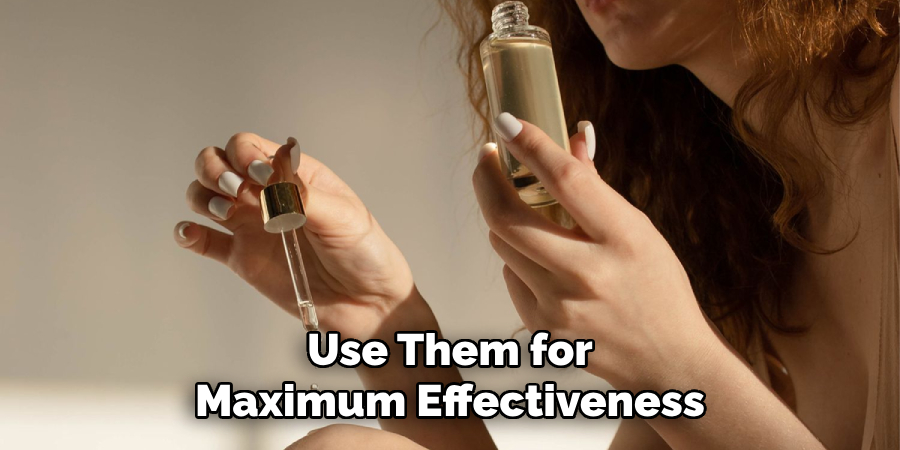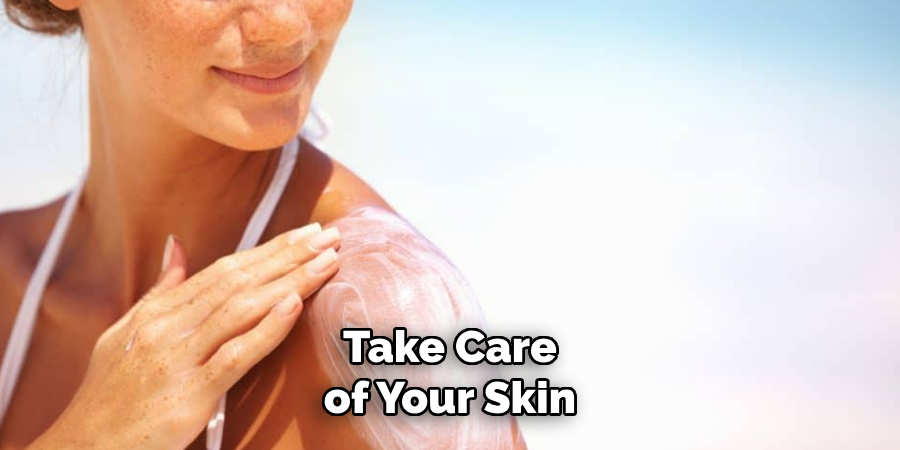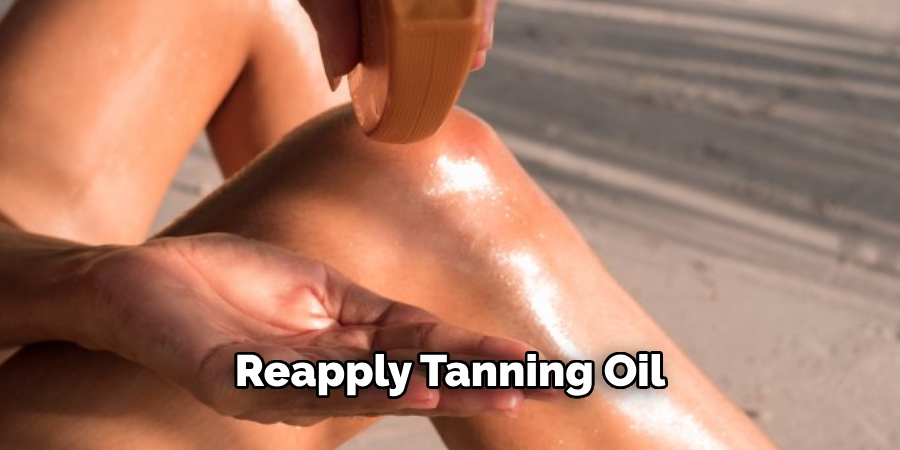Maintaining a balance between getting a gorgeous tan and protecting your skin from harmful UV rays can be a challenge. Tanning oil and sunscreen can both be effective tools in achieving your desired outcomes, but their proper use is crucial.

In this guide on how to use tanning oil and sunscreen, we will explore the best practices for using tanning oil and sunscreen to ensure you can enjoy the sun responsibly while minimizing the risks of skin damage. Whether you’re a seasoned sunbather or new to the tanning scene, understanding how to correctly apply these products will help you achieve a beautiful, healthy glow.
What is Tanning Oil
Tanning oil is a popular product used by those seeking a deeper, darker tan. It contains ingredients that help attract and intensify UV rays, accelerating the tanning process. Some tanning oils also contain moisturizing agents to keep your skin hydrated while you bask in the sun.
Before using tanning oil, make sure to check the label and choose one with an SPF (sun protection factor) of at least 15. This will provide some level of protection against harmful UV rays. It’s also essential to use tanning oils sparingly, as they can increase your risk of sunburn and other skin damage.
Why Use Sunscreen with Tanning Oil
While tanning oil can help you achieve a darker tan, it does not provide enough protection against harmful UV rays. That’s where sunscreen comes in. Sunscreen is designed to block and reflect UV rays, protecting your skin from damage.
It’s essential to use sunscreen along with tanning oil as part of your overall sun protection routine. Even if you’re using a tanning oil with an SPF, it may not be enough to protect your skin fully. Sunscreen with an SPF of 30 or higher is recommended by dermatologists for optimal protection.
8 Step-by-step Guidelines on How to Use Tanning Oil and Sunscreen
Now that you know the importance of both tanning oil and sunscreen, let’s discuss how to use them together for maximum effectiveness.

Step 1: Start by Applying Sunscreen
Begin your sun protection routine by generously applying sunscreen to all exposed areas of your skin. Choose a broad-spectrum sunscreen with an SPF of 30 or higher, as this will provide the best protection against both UVA and UVB rays. Make sure to apply the sunscreen at least 15 minutes before going outside to allow it to fully absorb into your skin.
Don’t forget often-neglected areas like the ears, back of the neck, and the tops of your feet. Reapply every two hours, or immediately after swimming or sweating, to maintain optimal protection throughout the day.
Step 2: Apply Tanning Oil to Dry Skin
Once your sunscreen has fully absorbed, it’s time to apply your tanning oil. Make sure your skin is dry before you begin, as oil spreads more evenly on dry skin. Take a small amount of tanning oil and gently massage it into your skin using circular motions. Focus on areas where you want to achieve a deeper tan, but be careful not to over-apply, as a little goes a long way.
Ensure that the tanning oil you are using has at least an SPF of 15 to provide some protection against UV rays. Reapply the tanning oil as needed, especially if you go for a swim or if you’ve been sweating, to maintain an even coverage and tanning effect.
Step 3: Keep Hydrated
Staying hydrated is crucial when spending time in the sun. Exposure to UV rays can cause your body to lose fluids more quickly, leading to dehydration. Make sure to drink plenty of water throughout the day to keep your body hydrated and your skin looking healthy. Aim for at least eight glasses of water a day and more if you are in the sun for extended periods.
Hydrating foods such as watermelon, cucumber, and citrus fruits can also help replenish lost fluids. Proper hydration supports your skin’s elasticity and overall health, which is essential for achieving and maintaining a beautiful tan.
Step 4: Take Breaks in the Shade
To reduce the risk of sunburn and other skin damage, it’s important to take regular breaks from direct sunlight. Spend time in the shade every hour to give your skin a chance to cool down and recover. This is especially crucial during peak sun intensity hours, typically between 10 a.m. and 4 p.m. when UV rays are the strongest.
Taking breaks in the shade does not mean you have to stop enjoying your time outdoors. Use this opportunity to relax, hydrate, and reapply sunscreen and tanning oil as needed. By incorporating shaded breaks into your sunbathing routine, you help to prevent overexposure and keep your skin healthier in the long run.

Step 5: Protect Your Eyes
Your skin is not the only thing that needs protection from UV rays. Your eyes are also at risk of sun damage, so make sure to wear sunglasses with UV protection when out in the sun. Look for sunglasses labeled as having 100% UV protection to ensure adequate shielding from harmful rays.
If possible, opt for wrap-around style sunglasses to provide additional coverage and protection for the delicate skin around your eyes. Proper eye protection is essential for maintaining good eye health and avoiding long-term damage from UV exposure.
Step 6: Avoid Tanning Beds
While the allure of a quick and controlled tan from a tanning bed might be tempting, it’s crucial to avoid them for the sake of your skin’s health. Tanning beds emit ultraviolet (UV) radiation, which can be just as harmful as the UV rays from the sun. Prolonged exposure to UV radiation from tanning beds significantly increases your risk of skin cancer, including melanoma, the deadliest form of skin cancer. Additionally, tanning beds accelerate the aging process, leading to premature wrinkles, age spots, and a loss of skin elasticity.
Instead of using tanning beds, stick to natural sunlight combined with the safe practices outlined in this guide. Always remember that a gradual tan achieved through careful sun exposure and proper protection is far safer for your skin than artificial and intensified UV exposure from tanning beds. Embrace a healthy, balanced approach to tanning that prioritizes your long-term skin health.
Step 7: Wear Protective Clothing
In addition to sunscreen and tanning oil, wearing protective clothing is another effective way to limit sun exposure and protect your skin. Choose lightweight, breathable fabrics that cover your skin while still allowing for proper ventilation. Look for styles with long sleeves, high necklines, and pants or skirts that provide coverage without being too restrictive.
Hats are also a great accessory for protecting your face and scalp from the sun’s direct rays. Opt for wide-brimmed hats that offer shade over your face and neck to avoid overexposure. Consider investing in a UV-protective swim shirt or rash guard if you plan on spending time in the water.
Step 8: Take Care of Your Skin After Sun Exposure
After a day spent in the sun, it’s essential to take care of your skin to help it recover and maintain its health. Start by taking a cool shower to soothe any potential sunburns and remove any excess sunscreen or tanning oil. Apply moisturizer liberally to rehydrate your skin, and if needed, use after-sun lotion to alleviate any redness or discomfort caused by sun exposure.
It’s also crucial to keep an eye out for any changes in your skin, such as new moles or changes in existing ones. If you notice any concerning skin changes, make sure to consult a dermatologist immediately.

Following these steps on how to use tanning oil and sunscreen can help you enjoy a beautiful, safe, and healthy tan all summer long. Remember to always prioritize your skin’s health and take necessary precautions when spending time in the sun. A gradual and protected approach to tanning will ensure that your skin stays radiant for years to come. Happy tanning!
Frequently Asked Questions:
Q: Is Tanning Oil Safe to Use?
A: As long as it has an SPF of at least 15 and is used in moderation, tanning oil can be safe to use. However, it’s essential to reapply as needed and take breaks in the shade to prevent overexposure to UV rays.
Q: Can I Use Tanning Oil on My Face?
A: Yes, you can use tanning oil on your face. It’s important to choose a product that is specifically formulated for facial use and has an appropriate SPF level. Make sure to also take regular breaks in the shade and protect your eyes with sunglasses while using tanning oil on your face.
Q: How Often Should I Reapply Tanning Oil?
A: It’s recommended to reapply tanning oil every 2-3 hours or more frequently if you are sweating or spending time in the water. It’s also important to reapply after towel-drying to ensure proper protection.
Q: Can I Use Tanning Oil with Other Sun Protection Methods?
A: Yes, tanning oil can be used alongside other sun protection methods such as sunscreen and protective clothing. In fact, it is recommended to use multiple forms of sun protection for maximum coverage and to prevent overexposure.

Conclusion
Achieving a beautiful tan takes time, patience, and proper care. By following the steps outlined in this guide on how to use tanning oil and sunscreen, you can safely achieve a golden glow while maintaining the health of your skin.
Remember to always prioritize sun protection and listen to your body’s signals when it comes to sun exposure. With the right habits and practices, you can enjoy a radiant tan without sacrificing your long-term skin health. So go ahead, soak up that Vitamin D, but do so responsibly and with caution.
About the Author
Jane Hubbard is a passionate beauty expert with a wealth of experience in makeup, hair, and overall beauty techniques. After years of working as a hairdresser specialist, she followed her entrepreneurial spirit and started her own consultancy business.
Jane has always been driven by her desire to help others feel confident in their own skin, and she does this by sharing her knowledge, experiences, and practical beauty tips. Through her consultancy, she empowers individuals to embrace their unique beauty, offering tailored guidance that boosts both self-esteem and personal style.
Professional Focus
- Specializes in makeup, hairstyling, and beauty consulting.
- Provides personalized beauty advice, tips, and techniques to help individuals feel confident in their appearance.
- Dedicated to staying up-to-date with the latest industry trends and developments.
- Passionate about creating a comfortable and empowering experience for every client.
Education History
- University of Craft and Design – Bachelor of Fine Arts (BFA) in Woodworking and Furniture Design
- Woodworking Apprenticeships – Extensive hands-on training with skilled craftsmen to refine carpentry and furniture making techniques
- Online Courses & Masterclasses – Continued education in advanced woodworking techniques, design principles, and specialized tools
Expertise:
- Makeup artistry, hairstyling, and beauty consulting.
- Personalized beauty techniques to enhance confidence and self-expression.
- Educating clients on how to maintain their beauty routines at home.
